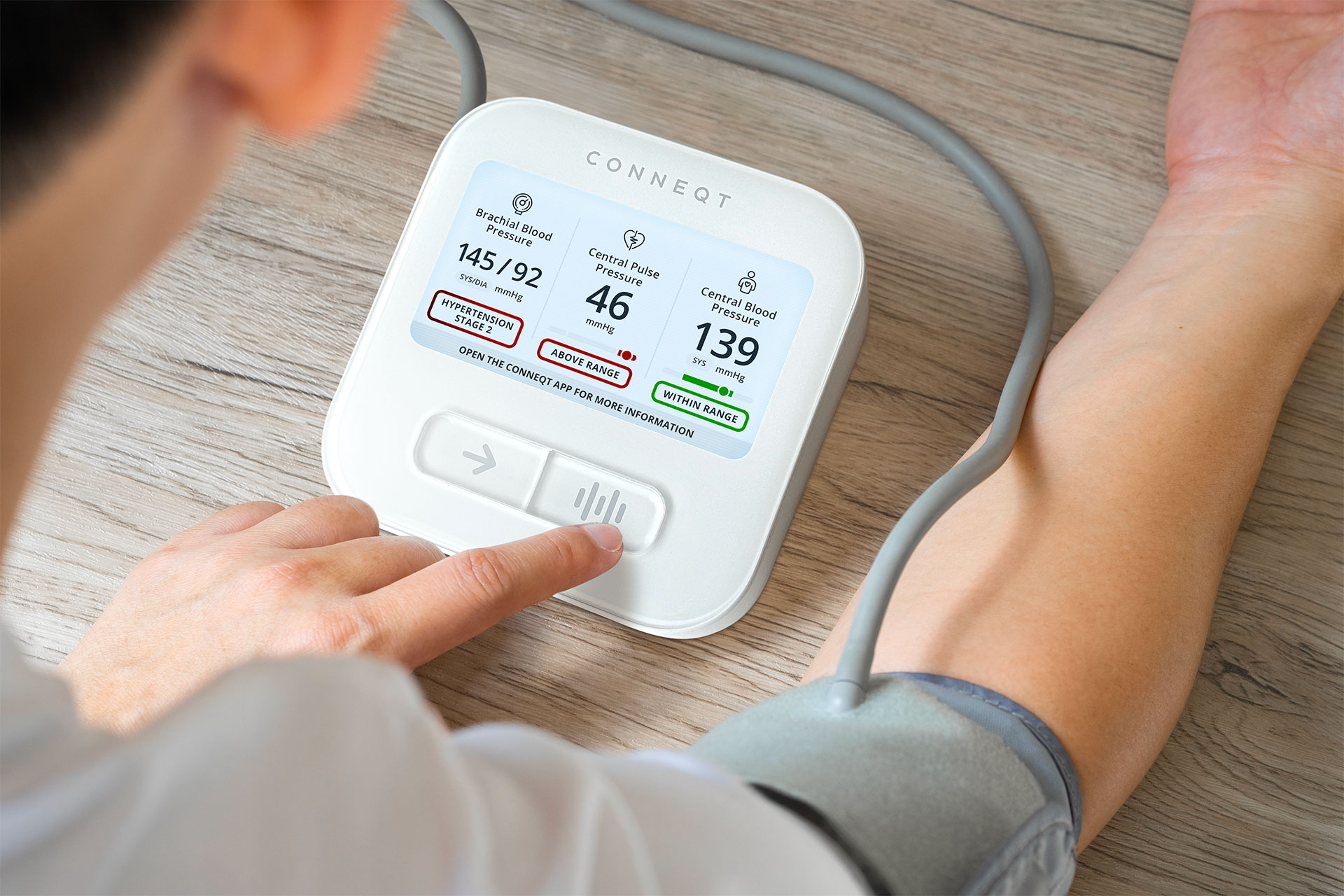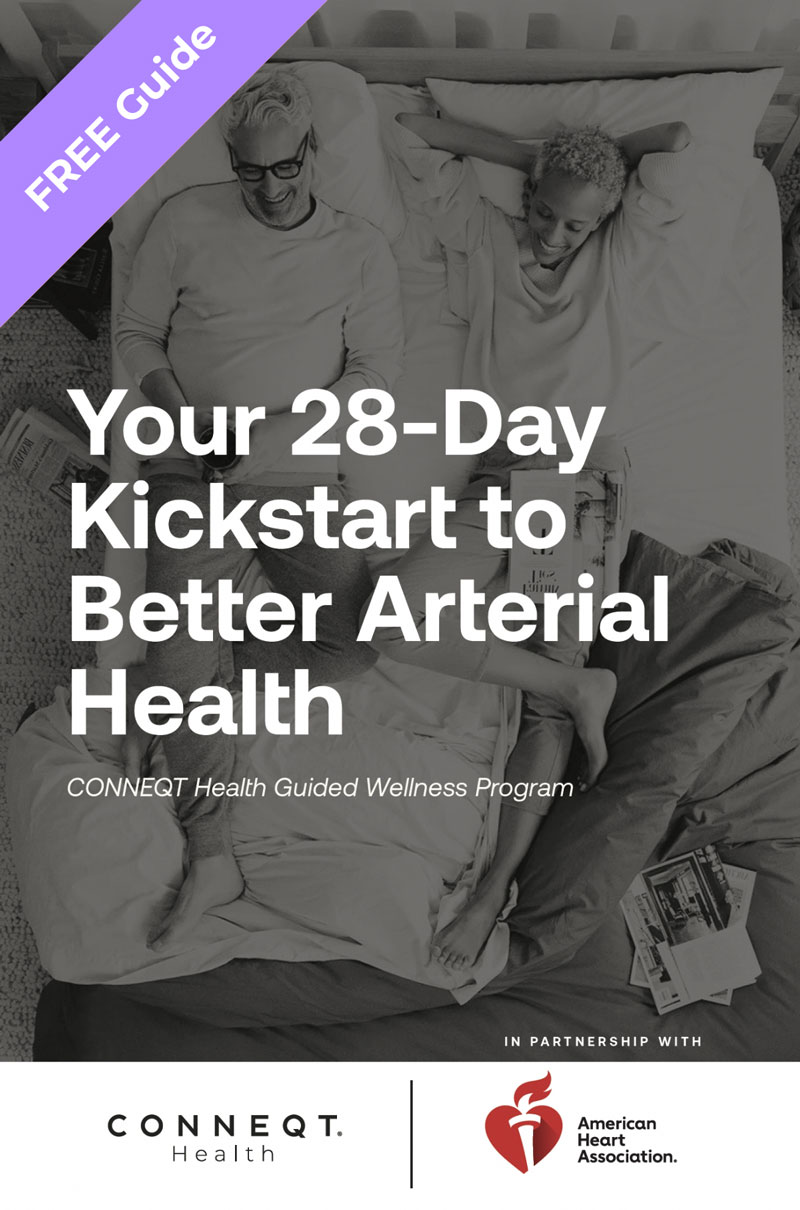Understanding Central and Brachial Blood Pressure
High blood pressure can be alarming, especially when it consistently rises beyond normal ranges. But how do you know that you have a complete picture of your blood pressure and the factors contributing to it? Both brachial blood pressure and central blood pressure (CBP) play important roles in understanding cardiovascular health. Brachial blood pressure, measured on your arm, is traditionally used to diagnose hypertension and identify hypertensive crises. CBP, on the other hand, offers a valuable perspective on the strain experienced by your heart and central arteries. This provides insights beyond surface numbers.
Knowing how to interpret and respond to elevated readings—whether brachial or central—is key to managing your health effectively.
Understanding Brachial Blood Pressure and Hypertensive Crisis
Brachial blood pressure measures the pressure in the arteries of your upper arm and is expressed as two numbers: systolic and diastolic. This measurement is important for diagnosing hypertension and identifying potentially life-threatening conditions like a hypertensive crisis:
Hypertensive Crisis (Brachial Blood Pressure ≥ 180 mmHg OR Diastolic ≥ 120 mmHg):
- Hypertensive Emergency: If systolic blood pressure is 180 mmHg or higher or diastolic blood pressure is 120 mmHg or higher, and you experience symptoms such as severe headache, chest pain, or vision changes, seek immediate medical attention.
- Hypertensive Urgency: If you have a reading in this range but no symptoms, it still requires prompt management to prevent complications.
Central Blood Pressure, Arterial Stiffness, and What They Mean
When your CBP or other cardiovascular metrics are “above range,” it indicates increased strain on your cardiovascular system. Elevated readings should be checked by your healthcare provider. They could indicate a higher risk of future heart problems.
It’s important to note that brachial blood pressure readings can sometimes be within normal ranges while CBP and other parameters, such as Augmentation Index (AIx) or Augmentation Pressure (AP), are elevated. This highlights the need for a more comprehensive approach to understanding cardiovascular health.
Here’s what elevated results could mean for different metrics:
- Central Blood Pressure (CBP): When CBP is above range, it indicates increased pressure on the heart and central arteries, signaling a higher cardiovascular risk. Managing it may involve lifestyle adjustments or medical intervention to reduce strain and prevent complications.
- Central Pulse Pressure (CPP): CPP refers to the difference between systolic and diastolic blood pressure measured at the aorta or other central arteries, rather than at peripheral arteries (such as those in the arm). This measurement provides a more accurate reflection of the pressure exerted on key organs, particularly those near the heart and major vessels. An elevated CPP suggests increased arterial stiffness and greater cardiovascular strain.
- Augmentation Pressure (AP): AP measures the additional central aortic pressure caused by reflected pulse waves returning from the arteries. Higher AP values indicate increased arterial stiffness, forcing the heart to work harder to pump blood efficiently.
- Augmentation Index (AIx): AIx reflects the proportion of blood pressure influenced by arterial wave reflections, providing an indirect measure of arterial stiffness. Elevated AIx suggests increased vascular resistance and greater strain on the heart.
If your readings on the above metrics fall into the “above range” category, it is important to work closely with your healthcare provider to determine appropriate interventions. The CONNEQT App offers a way to track these metrics in detail, helping you stay informed and make proactive choices.
Steps to Take When Blood Pressure is High
When you see an elevated reading, follow these steps:
- Stay Calm and Reassess
High readings can sometimes result from temporary factors such as stress, caffeine, or recent activity. Sit quietly for five to ten minutes, focus on deep breathing, and retake your measurement. Ensure your cuff is correctly placed, and your arm is supported at heart level. - Differentiate Between Urgency and Emergency
- If your brachial blood pressure is ≥ 180/120 mmHg and you experience symptoms like chest pain or severe headache, seek emergency medical attention immediately.
- If you have no symptoms but your readings remain elevated, contact your healthcare provider for further guidance.
- Use the CONNEQT App to Track Your Readings
The App automatically records both brachial and central blood pressure readings from your CONNEQT Pulse advanced arterial health monitor. This helps identify trends in your cardiovascular health, providing essential information for you and your healthcare provider.
How the CONNEQT App Supports Your Health
The CONNEQT App integrates advanced monitoring with clear visual summaries of your health data, empowering you to track your progress, engage in guided wellness programs, and understand your health profile in a straightforward way. By offering detailed insights into key metrics like CBP, AIx, AP, and CPP, the App helps you stay proactive in managing your cardiovascular health.
When to Seek Help
- Emergency: If your brachial blood pressure is ≥ 180/120 mmHg with symptoms like chest discomfort or severe headache, seek emergency care immediately.
- Persistent Elevations: If your brachial readings are consistently ≥ 140/90 mmHg, or if your CBP or other parameters are above range, schedule a consultation with your healthcare provider to address potential risks and interventions.
Take Control of Your Cardiovascular Health
Elevated blood pressure—whether brachial or central—is more than just a number. It’s an opportunity to take meaningful action. By monitoring trends and leveraging the advanced tools in the CONNEQT App, you can protect your heart and build a healthier future.
Your path to better health starts with awareness, and CONNEQT is here to guide you every step of the way.







